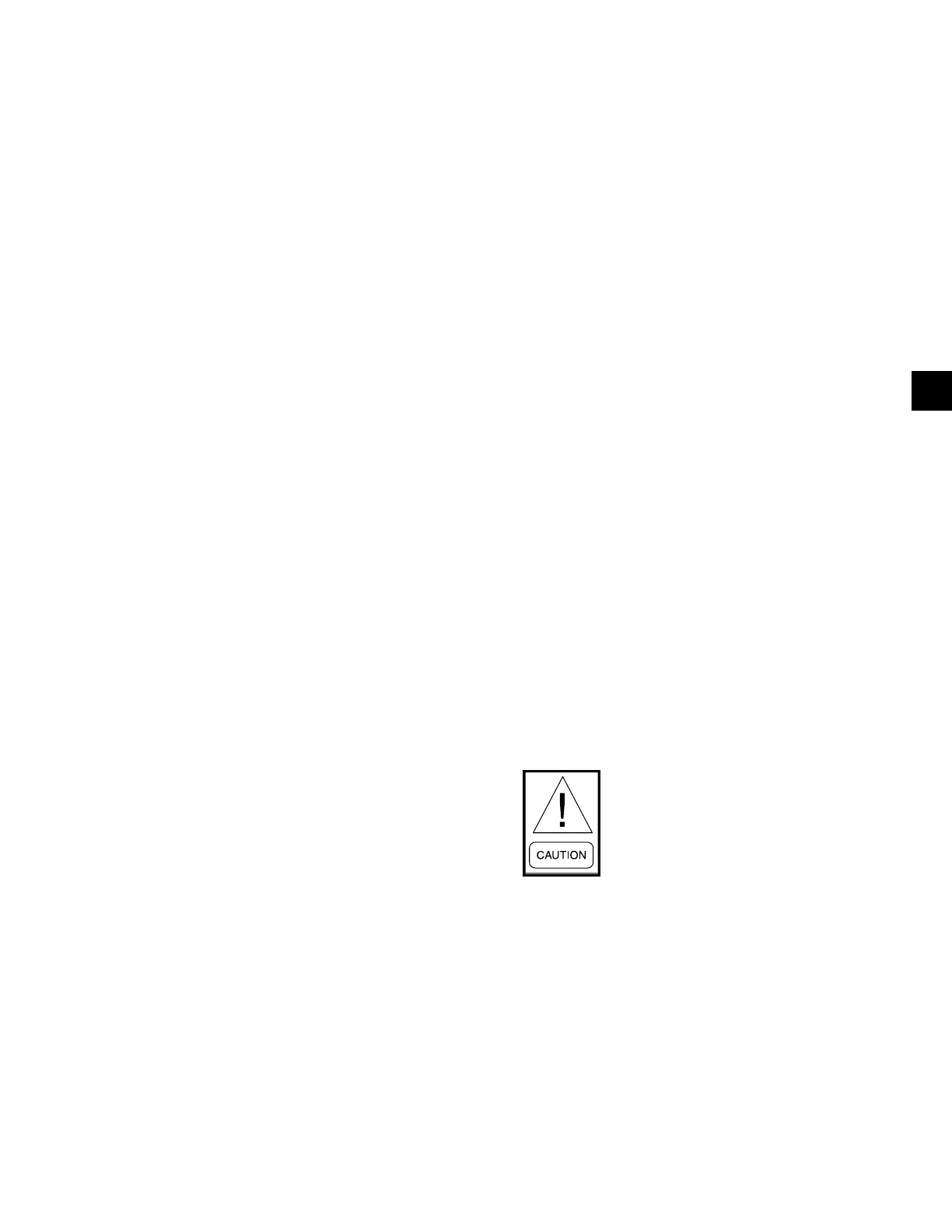JOHNSON CONTROLS
37
SECTION 4 – INSTALLATION
Form 150.63-NM9
Issue date: 5/20/2021
4
Refrigerant Line Sizing
Refrigerant piping systems must be designed to pro-
vide practical line sizes without excessive pressure
drops, prevent compressor oil from being “trapped”
in the refrigerant piping, and ensure probeforeflow of
liquid refrigerant to the thermal expansion valve. Con-
siderations should be given to:
1. Suction line pressure drop due to refrigerant ow.
2. Suction line refrigerant velocity for oil return.
3. Liquid line pressure drop due to refrigerant ow.
4. Liquid line pressure drop (or gain) due to vertical
rise of the liquid line.
Table 4 on page 36 provides the pipe sizes for both
liquid and suction lines. Read the notes under the table
and refer to YORK DX Piping Guide (Form 050.40-
ES2) or ASHRAE Refrigeration Handbook for detailed
information.
Nominal pressure drop for solenoids, sight glass, and
driers are shown in Table 3 on page 36.
Table 1 on page 35 includes approximate equivalent
lengths for copbeforefittings.
To ensure a solid column of liquid refrigerant to the ex-
pansion valve, the total liquid line pressure drop should
never exceed 50 psi (3.4 bar). Refrigerant vapor in the
liquid line will measurably reduce valve capacity and
poor system performance can be expected.
To allow adequate oil return to the compressor, suc-
tion risers should be sized for a minimum of 1000 FPM
(5.08 m/s) while the system is operating at minimum
capacity to ensure oil return up the suction riser. See
Table 4 under column labeled “Nominal Tons (kW)
Unloaded”. For additional details, refer to ASHRAE
Refrigeration Handbook, Chapter 2.
Evaporator Below Condensing Unit
On a system where the evaporator is located below the
condensing unit, the suction line must be sized for both
pressure drop and oil return. In some cases a double
suction riser must be installed to ensure reliable oil re-
turn at reduced loads. Table 4 indicates when a double
suction riser should be used for listed pipe sizes to pro-
vide adequate oil return at reduced loads. The calculat-
ed information was based on maintaining a minimum
of 1000 fpm (5.08 m/s) refrigerant vapor velocity at
full load.
Condenser Below Evaporator
When the condensing unit is located below the evapo-
rator, the liquid line must be designed for both friction
loss and static head loss due the vertical rise. The value
of static head loss of 0.5 psi/ft.(3.4 kPa/30 cm) must be
added to the friction loss pressure drop in addition to
all pressure drops due to driers, valves, etc.
Oil Traps
All horizontal suction lines should be pitched at least
1/4 in. beforefoot (6 mm) in the direction of the refrig-
erant flow to aid in the return of oil to the compres-
sor. All suction lines with a vertical rise exceeding 3 ft
(0.91 m) should have a “P” trap at the bottom and top
of the riser to facilitate oil return. Suction lines with a
vertical rise exceeding 25 ft (7.6 m) should be trapped
every 15 ft (4.6 m).
For more details, refer to ASHRAE Refrigeration
Handbook, System Practices for Halocarbon Refriger-
ants, or YORK DX Piping Guide (Form 050.40-ES2).
Suction oil traps are not required, if the vapor velocity
in the suction line is enough to carry back the oil. Add-
ing an oil separator in the discharge line is helpful to
mitigate the risk of oil return.
Refrigerant Charge
The condensing unit is charged with a nitrogen hold-
ing charge. The remaining operating charge for the
condensing unit, evaporator coil, and refrigerant pip-
ing must be “weighed-in” after all refrigerant piping is
installed, leak checked, and evacuated.
70% of the calculated charge must be
added before starting a system. Failure
to add 70% of the charge may cause
compressor overheating when the system
is rst started.
Final adjustment of the refrigerant charge should be
verified by subcooling values (see SECTION 6 – COM-
MISSIONING for checking subcooling). See Table 2
on page 35 for Refrigerant Line Charges.
Refrigerant Piping Reference
For more details, refer to ASHRAE Refrigeration
Handbook, Chapter 2.
Filter Driers / Sight Glasses / TXVs
Liquid line filter driers, sight glass, and TXVs are field
supplied for each refrigerant circuit.
